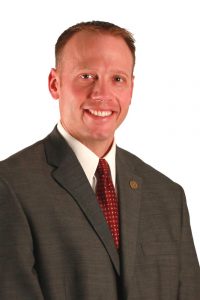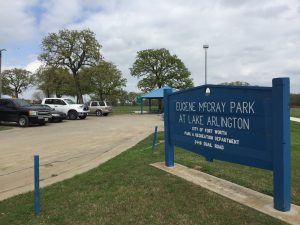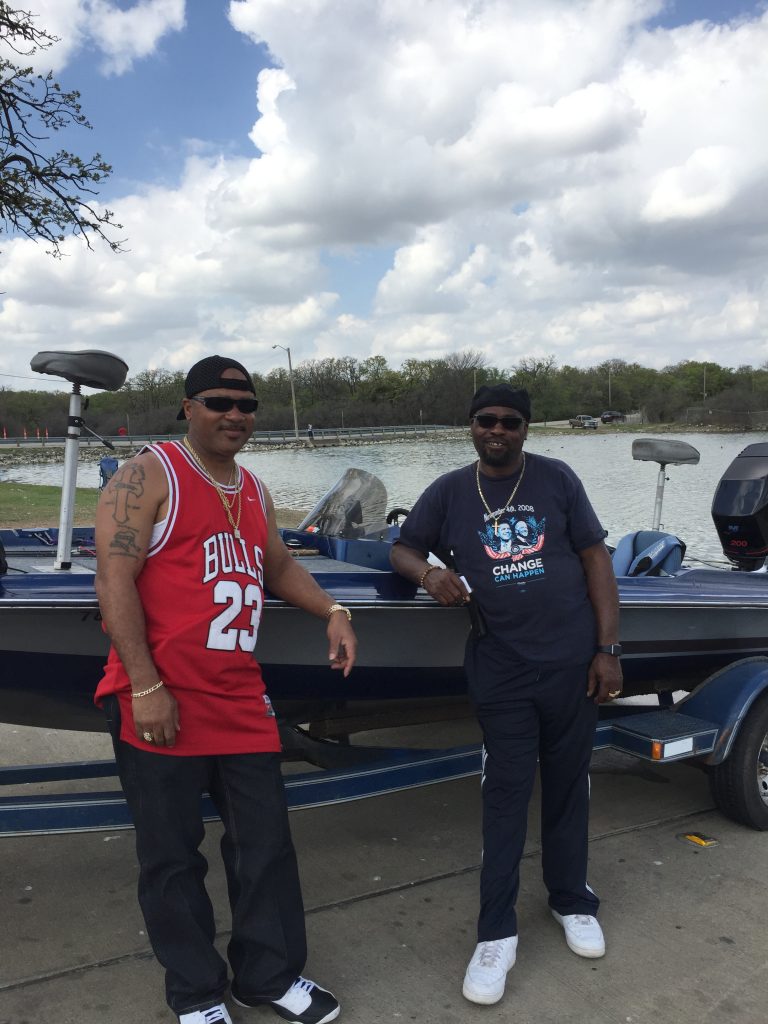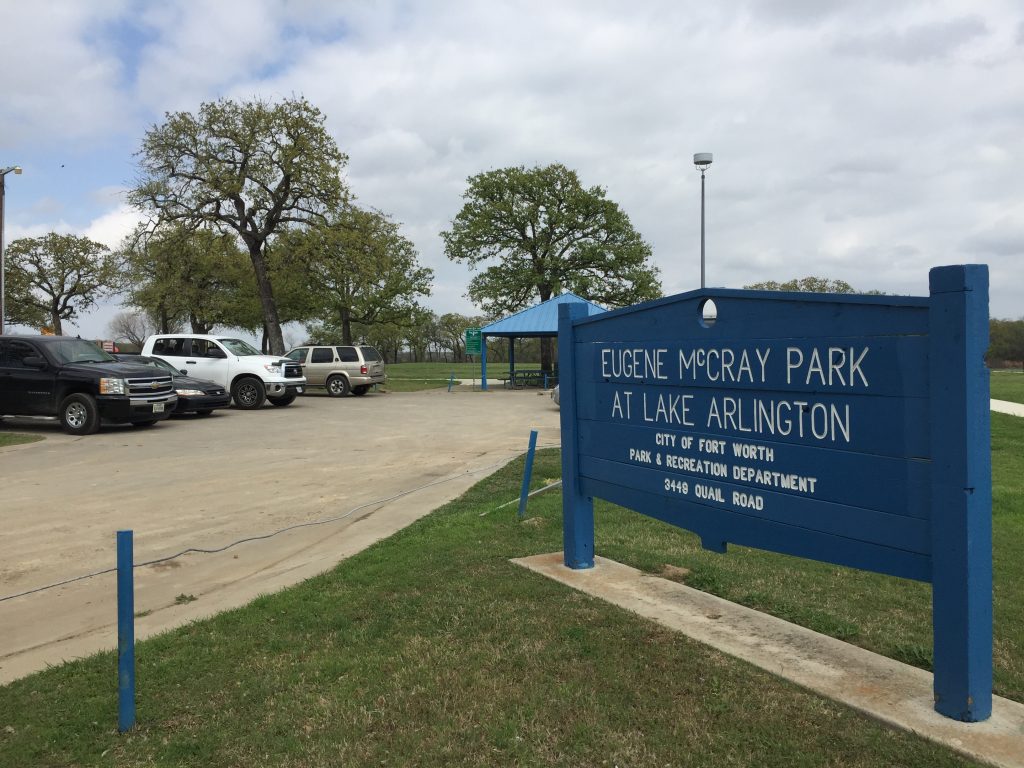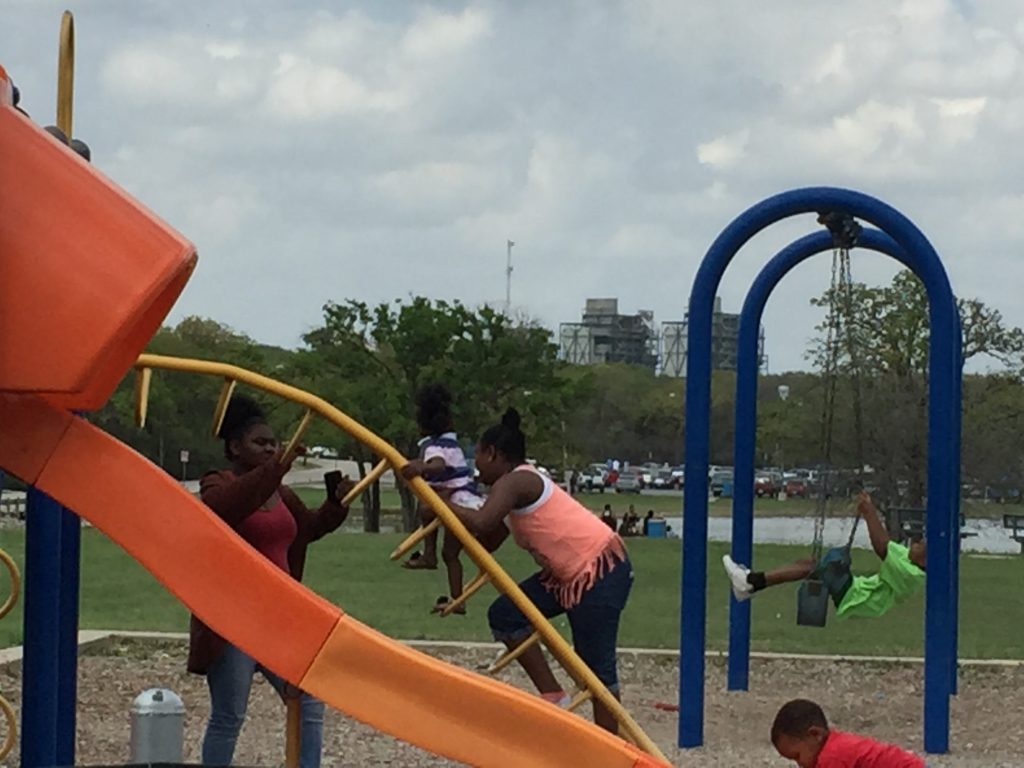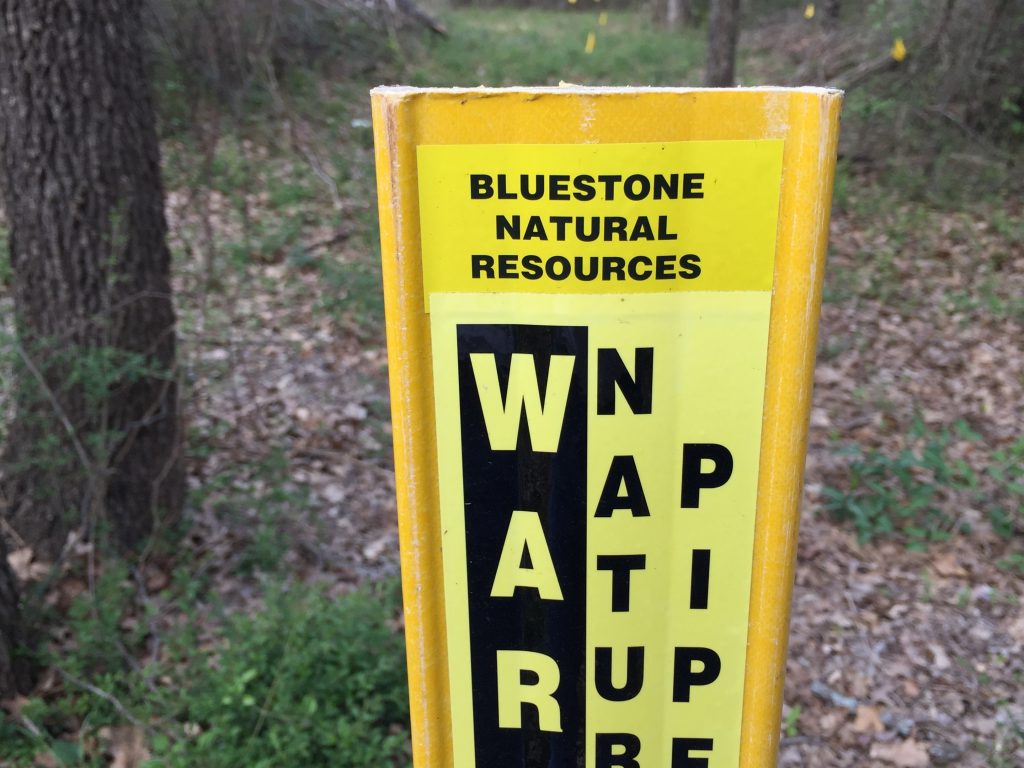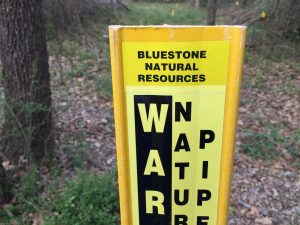Injection Wells
Citizens Just Won a Fight Over Local Control….Now What?
 In case you missed it, last Thursday the Bluestone company pulled its permit request for a new fracking waste Injection well that was going to be sited on the western shores of Lake Arlington.
In case you missed it, last Thursday the Bluestone company pulled its permit request for a new fracking waste Injection well that was going to be sited on the western shores of Lake Arlington.
Congratulations to Liveable Arlington and everyone else who contributed to this victory. It’s always great when you can stop a bad idea in its tracks, but to stop this one, with the current Powers-That-Be, is quite remarkable.
Bluestone’s application had united a broad spectrum of allies for a Barnett Shale fight – residents, local fractivists, municipalities, and water quality groups. Fort Worth had banned such wells years prior to the passage of notorious HB40, but Bluestone acted like that ban didn’t matter. Arlington objected over its drinking water source being imperiled by the well. Bluestone shrugged its shoulders.
Here was the first challenge to the uneasy truce that settled over the state between home rule cities and Austin after HB40 took effect. And it came not from an aspiring Denton trying to protect its citizens, but from industry. And it wasn’t targeting an upstart city, but the town that industry hailed as a model of gas regulation only two years ago when HB40 passed.
Thousands of letters opposing the permit were sent in to the Railroad Commission. An army of lawyers had been hired by Forth Worth and Arlington. It became a point of contention when RRC Commissioner Ryan Sitton visited from Austin in April to attend a Stop Six community meeting and Earth Day Texas. Momentum was with the opposition as it headed into a September hearing, already postponed twice. Bluestone was, seemingly, one injection well too far: the poster boy for overreach by an industry swelled with avarice.
Which makes its sudden absence a jolt to the system. On the one hand it’s good to know that in the current political climate there’s SOMETHING industry does that goes too far, even for the Texas “bidness-friendly” regulatory establishment.
On the other, it takes the air out of the largest wave of opposition to a gas patch permit in a very long time and brings us back to the truce frozen in place in when HB40 passed. Everyone is settling back into the stifled status quo, where technology, problems, and profits can advance with time, but local regulations are forever stuck in 2015.
All that energy into opposing Bluestone, only to arrive back where we started.
Which is why now, when citizens just won a major victory, is not the time to take our foot off the gas. It’s actually the time to set the stage for a fight in Austin in 2019.
Bluestone’s permit application proves cities must have more protection than HB40 provides. It’s still a poster boy for overreach. But so are other fights. On the same day the news was announced about Bluestone’s withdrawal, the owners of a proposed concrete crushing plant that Fort Worth Eastsiders fought off last year turned back up and filed for another try. Even though city zoning prohibits the facility from the location it wants near city parks and a school.
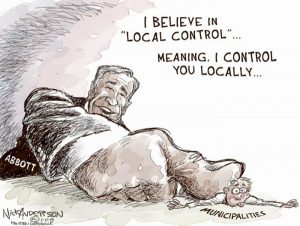 Statewide, there’s a growing backlash to Austin’s attempt to take away any and all vestiges of traditional Texas home rule local control. What started with protecting the gas industry has now swept up everything from trees to immigration and many Texas citizens, even conservative ones, are aghast at the result.
Statewide, there’s a growing backlash to Austin’s attempt to take away any and all vestiges of traditional Texas home rule local control. What started with protecting the gas industry has now swept up everything from trees to immigration and many Texas citizens, even conservative ones, are aghast at the result.
Environmentalists and fracktivists need to take advantage of this shift in the swing of the pendulum. In 2017 all of our efforts to clean-up the gas industry begin and end at the local level, where office holders must live with the results of their decisions side-by-side with their constituents. And yet HB40 makes any local advancement impossible. To get anywhere, to move off dead center, that law must be amended, or rescinded.
That is a multi-year, statewide effort that has to begin now if it’s to arrive in Austin in January 2019 with any impact.
To pull that off the movement will have to get over its aversion to coordinating regionally across city limits and be more proactive. So far, the fights in the Barnett have been city-by city, with no overarching alliances. Less coordination has meant less power. All one has to do is look at the anemic responses to HB40 in this year’s legislature to see how weak this strategy has made the movement.
But some hope could arrive in Austin in January 2019 in the form of an organized coalition of the self-interested promoting good-old fashioned local control, working with the victors of what could be a November 2018 mid-term “wave” election that might even reshape the Texas Legislature.
Who will be the architects of that strategy? Certainly not any of the larger national environmental groups, who’ve written Texas off and only want to collet money here, not spend it. It will probably have to be home grown with the assist of new groups like the Campaign to Defend Local Solutions that are linking-up threats to local control across the country.
It feels good for citizens to win one. And it would be nice if we could rest a while now and enjoy the victory, because they are so few and far between.
But sinking back into inaction only guarantees that another Bluestone will be showing up. If not in your backyard, then someone else’s. Now that we’ve established where the line in the sand is, it’s time to move the line forward.
Next Week Gives You Two Chances to Press RRC Commissioner on Lake Arlington Injection Well
Texas Railroad Commissioner Ryan Sitton in DFW Next Week
Thursday Night, April 20, 2017 6:00 PM – 8:00 PM
Community Forum about: Injection Disposal Wells
Handley Meadowbrook Community Center
6201 Beaty St, Fort Worth, TX 76112
Sponsored by St. Rep Nicole Collier
Friday Morning, April 21st, 10:50 – 11:40 am
Responsible Shale Extraction Roundtable Discussion
Automotive Building, Earth Day Texas at Fair Park
Open, public, and free appearances in DFW by Texas Railroad Commissioners these days are about as rare as actual trains at the RRC. But this next week offers two chances for local residents to see, hear, and talk to a real Commissioner without having to donate money to his campaign.
Irving’s own Ryan Sitton, RRC Commissioner since 2014, will be in town for two free public forums on consecutive days on either side of the Metromess: Thursday night at a community meeting in Southeast Fort Worth and Friday morning at an Earth Day Texas appearance at Fair Park.
That’s important because Sitton is one of only three RRC votes that could decide to take the unprecedented action of permitting a huge fracking waste injection well on the shores of Lake Arlington, source of drinking water to hundreds of thousands, and just a short distance from Eugene McCray Park, one of the most popular recreational spots for Fort Worth’s black community.
On Thursday from 6 to 8 pm, at the Handley Meadowbrook Community Center, Sitton will be the featured guest of a forum on the injection well sponsored by State Representative Nicole Collier, who represents Stop Six.
On Friday morning, from 10:50 to 11:40 am Sitton will be one of four participants in a Earth Day Texas roundtable discussion at Fair Park on “Responsible Shale Extraction” as part of UTA’s C.L.E.A.R. ambitious two-day symposium on the oil and gas industry within the weekend extravaganza. Also on the Earth Day panel are UTA’s Dr. Kevin Shugg, Director of CLEAR, Laura Buchanan, who’s the Director of the Texas Land and Mineral Rights Association, and Downwinders’ own Jim Schermbeck.
Sitton spent his early career working for the oil and gas industry, including ALCOA, Oxy, Marathon, and Berwanger Engineering and Consulting. In 2006, he and his wife founded PinnacleART, an engineering consulting company. Like all of his peers, his 2014 campaign was primarily financed by individuals and corporations he’s now in charge of regulating.
The threat to Lake Arlington has brought opposition from a host of cities who get some or most of their drinking water from the reservoir, including the City of Arlington and Grapevine, while earning Fort Worth’s outrage by challenging a pre-HB40 ban on such wells in the city limits. Back in 2015, Cowtown’s oil and gas drilling-friendly ordinance was touted by the industry as a model. It only took two years for the industry to decide it wanted an even more lenient code of conduct – one that would allow over a million gallons of fracking waste to be injected daily at high pressure into fissures directly under Lake Arlington.
Bluestone’s blatant provocation has produced an alliance between fractivists, environmentalists, Stop Six residents, and municipalities like Fort Worth that was unthinkable in 2015.
These two appearances by Sitton are likely one of the only opportunities most DFW residents will get to voice their opposition to the injection well to a RRC Commissioner in person before the May hearing September hearing on the permit.
The two-day hearing before the entire RRC will take place in Austin, not Arlington or Ft. Worth, and after that, no matter the ruling, the feeling is that all of this is going to be in court for a while. So please spread the word and use Thursday and Friday to make sure Commissioner Sitton knows exactly how local residents feel about the Bluestone permit.
You can also still use our Featured Citizen Action link send an email to the RRC protesting the injection well.
Make no mistake about it, the decision the RRC makes about this in-your-face industry confrontation with Fort Worth – whether even a “model” ordinance can withstand the rapacious regulatory rollback currently underway within federal and state government, is going to be a landmark one affecting every city in Texas. Don’t sit it out.
Downwinders Participates in First Earth Day Texas Oil and Gas Symposium
Downwinders at Risk is proud to be taking part in the first annual Responsible Shale Energy Extraction (RSEE) Symposium & Exposition, happening over two days at this year’s at Fair Park in Dallas, Friday April 21st and Saturday, April 22nd.
Climate Change superstar Dr. Katherine Hayhoe, Fracking health-effects lecturer (and Downwinder friend) Dr. Anne Epstein, and the Texas Railroad Commission’s own Ryan Sitton will also be participating, along with lots of others.
UTA’s Collaborative Laboratories for Environmental Analysis and Remediation, or (CLEAR) is the event’s primary sponsor and organizer, with an assist from the Cynthia and George Mitchell Foundation in Houston. Some of you may know the late George Mitchell as the inventor of fracking, but even he had serious second thoughts about the way the technology was being used.
The Symposium is an attempt to round-up scientists, industry advocates, environmental groups, and technology developers to talk both about fracking’s very real problems, and possible solutions, in an open forum.
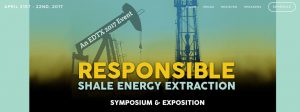 Since 2012 CLEAR has been out and about collecting samples throughout the Barnett Shale and other plays, identifying surface water and groundwater contamination issues that may or may not be directly linked to fracking itself. This is the first time in its history the group has taken on the task of sponsoring a two-day conference. Almost every aspect of unconventional shale mining, or hydraulic fracturing, will try to be addressed.
Since 2012 CLEAR has been out and about collecting samples throughout the Barnett Shale and other plays, identifying surface water and groundwater contamination issues that may or may not be directly linked to fracking itself. This is the first time in its history the group has taken on the task of sponsoring a two-day conference. Almost every aspect of unconventional shale mining, or hydraulic fracturing, will try to be addressed.
Everything is being run out of “The Westminster Abby of Texas,” Fair Park’s own Hall of State. A complete schedule is available here.
Downwinders’ Director Jim Schermbeck appears as part of a roundtable discussion on fracking in general, comparing the perspectives of landowners, gas operators, public health and environmental advocates and scientists. It includes water entrepreneurRichard Seline (AccelerateH20), TRRC Commissioner Ryan Sitton,Laura Buchanan, Executive Director of the Texas Land & Mineral Owners Association , and UTA’s own Kevin Schug.
Maybe you’ll want to come by The Hall of State Friday and mention to Commissioner Sitton how much you dislike the fact that BlueStone wants to put a new injection well on the shores of Lake Arlington. Or show-up on Saturday to see Dr. Hayhoe wow ’em again. But anytime you decide to visit Earth Day Texas, please make sure you come by and say hello to us at the Downwinders table over in the Centennial Building.
“This is the Black Side of Lake Arlington.” Why the BlueStone fracking waste injection well fight is also an Environmental Justice fight
By now you might have heard about the new fracking waste injection well being sought by BlueStone Corporation on the shores of Lake Arlington, the source of drinking water to hundreds of thousands of Arlington residents as well as the cities of Bedford, Colleyville, Euless, Grapevine, and North Richland Hills.
You may know it’s being proposed with a straight face near the Lake Arlington dam, and presents a direct challenge to the municipal bans on such wells that both Fort Worth and Arlington have passed.
But did you know there’s a lakeside public park that’s a longtime social and recreational hot spot for Fort Worth’s Black community just hundreds of feet away? Did you know there are Stop Six residents living adjacent to the proposed well site?
You’d never guess it from the view most of us get out of our cars buzzing by the East Berry exit on Loop 820. Nor can you find it on any of your Internet navigation maps. That’s right, it’s a park and neighborhood so unknown, even Google can’t find it.
But drop by Eugene McCray Park any given weekend and you’ll see a large slice of older Fort Worth black culture, with lots of fishing rods, lawn chairs, and baking brisket. “This is the Black Side of Lake Arlington” says an older gentleman sitting on his tailgate, and a panoramic look around confirms his judgement.
Smaller children energetically utilize the top-o-the-hill playground, older kids and their parents fish from the shoreline, others out in all varieties of boats come and go from the park’s ramp, birthday and anniversary parties roar with laughter from the covered pavilions, customized grills and recipes are carefully tended, dominos are slapped down hard on the cement tables, all surrounded by fresh spring greenery and the lapping waters of the lake. You can watch a heron swallowing a snack, or florescent-necked ducks swimming the small bay that shoulders the park. It’s one giant African-American Norman Rockwall painting. On this March spring day, it’s as though Stop Six has its own miniature all-black Eden in the middle of DFW that no white person can even guess is here.
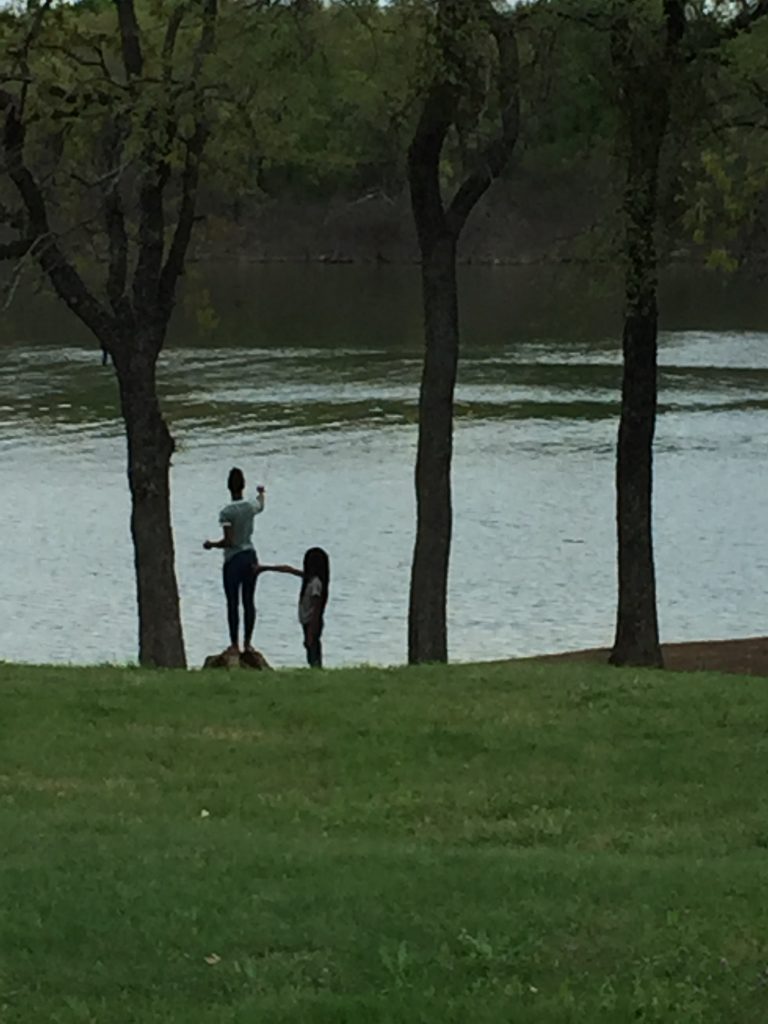 But less than a quarter-mile mile south along this idyllic lake shore is where the BlueStone corporation wants to start disposing of a million and a half gallons of fracking waste a day – in direct violation of a Fort Worth ordinance that says you can’t do that. It’s also the first real challenge to the stalemate frozen in place by 2015’s state law HB40, reining-in the power of cities to regulate oil and gas facilities within their own city limits.
But less than a quarter-mile mile south along this idyllic lake shore is where the BlueStone corporation wants to start disposing of a million and a half gallons of fracking waste a day – in direct violation of a Fort Worth ordinance that says you can’t do that. It’s also the first real challenge to the stalemate frozen in place by 2015’s state law HB40, reining-in the power of cities to regulate oil and gas facilities within their own city limits.
On either side of the well site, neighborhoods are squeezed between 820 and the lake with a mix of low and middle-income renters and homeowners, small lots with gardens, and older ranchettes with horse stalls and chicken coops. McCray Park is their backyard.
Last year BlueStone inherited thousands of local gas wells from belly-up Quicksilver Energy. Right now, the wastes from those wells goes outside the city limits to injection waste wells in other parts of North Texas – places that have had their own problems with their continued operation (like earthquakes, which makes putting a new one by a large dam seem like a bad idea, but we digress….)
But if it had to have a new well – and there’s no proof it did – BlueStone had the pick of any area in Tarrant County or Fort Worth to site this new facility. Nothing in the quotes from the company so far indicate this Stop Six site is an especially strategic or convenient location to ship the wastes from those Quicksilver wells.
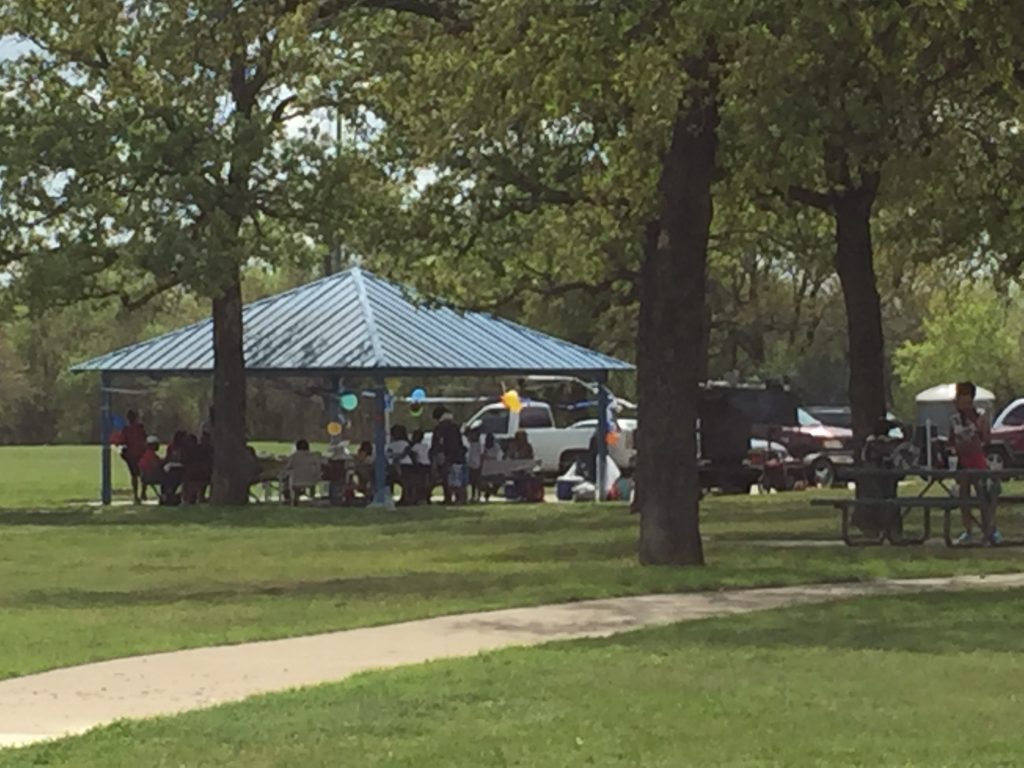 But something about this Stop Six neighborhood does make it a desirable target for a company like BlueStone: It’s predominantly minority and doesn’t have a lot of money to fight back.
But something about this Stop Six neighborhood does make it a desirable target for a company like BlueStone: It’s predominantly minority and doesn’t have a lot of money to fight back.
Does anyone who already has experience in these matters believe it was only coincidence that drove BlueStone to pick this Stop Six site, instead of say, somewhere on the tonier west side? That’s what makes this fight an environmental justice fight along with everything else.
BlueStone has said that its well will only be used for its “nearby” operations. But those operations only produce about half a million gallons of waste a day. Why do they need a permit that allows for disposing of three times that amount? It’s not unusual for a waste well to get a permit under the guise of exclusive use, only to amend the permit a short time later to allow all comers – and charge a nice profit. It also makes it a lot easier to flip in hard times. Unless there’s a deed restriction on this operation, this Lake Arlington site could end up the same way, and the industrial use will overwhelm everything else. The inner-city Black Eden will be gone.
When Downwinders’ staff visited this last weekend, not a lot of the park users were aware of what was taking place just on the other side of the tree line. Given the history and stature of the park – it’s named after a black former city council member and is due to headline new bike and hike trails along the Lake’s west shore – there’s potential for a lot of good organizing in Fort Worth’s black community, and Stop Six in particular, by well opponents. This is as blatant and combustible a combination of race and pollution as recent Barnett Shale Gas Wars have produced.
The area is represented by Fort Worth City Council Member Gyna Bivens, who’s already voted to fight the Bluestone permit, State Representative Nicole Collier, who voted against HB 40 in 2015, and State Senator Konni Burton, a Republican who voted for HB40 while praising Fort Worth’s gas ordinance as a model to be duplicated. That would be the same ordinance now under attack from Bluestone’s pursuit of the well site by Eugene McCray Park.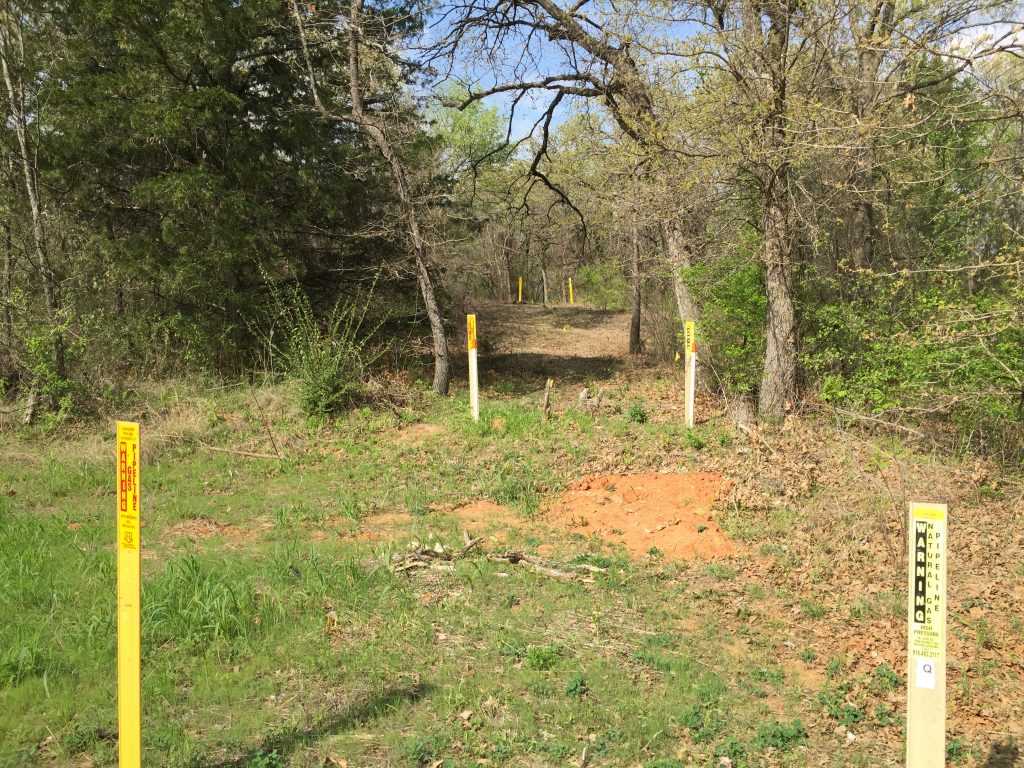
If you haven’t already, you can write in to officially register your opposition to BlueStone’s permit address via our Click N’Send feature. A hearing in Austin at the Railroad Commission offices has been set for May 25th and 26th…..
Raising the potential for earthquakes within distance of a large, important dam,
Potentially poisoning drinking water for a large chunk of the Metroplex,
Spills and accidents causing fish kills and other wildlife harms
Larger and larger emissions threatening breathers downwind,
Ignoring local ordinances and the rule of law,
There were already plenty of good reasons to oppose the BlueStone injection well. Now there’s another.
The First Step to Opposing a new Disposal Well on the Shores of Lake Arlington is Just a Click Away
Today, we officially announced our hiring of Anthony Gonzales as a second Downwinders staffer. One of the reasons we need additional personnel is to help fight off the kinds of new challenges that a Trump presidency will encourage. Exhibit A: The Bluestone Natural Resources Corporation permit to open a disposal well for their fracking wastes on the shores of Lake Arlington, the major source of drinking water for the city of approximately 350,000 people.
Since the passage of the notorious HB 40 in 2015 by the State legislature that substituted state control over local zoning in regulating oil and gas operations within city limits, no Texas municipality or gas industry operator has challenged the uneasy status quo that was in place when the law was signed…until now.
In 2012, after rounds of concern about earthquakes and industrial contamination Fort Worth banned the siting of disposal wells within their city limits – a bold move for a municipality that openly embraced the fracking boom.
But when HB40 was passed by the State Legislature in 2015, local regulations like Cowtown’s disposal well ban had to have been in place for five years to be commercially acceptable. Bluestone applied for its permit less than six months before that five year period was up.
Last year Bluestone bought out Quicksilver and all of its Barnett Shale wells. Instead of continuing to use existing wells outside the city limits, Bluestone wants the convenience of dumping in town. Its permit requests permission to inject up to 1,250,000 gallons of fracking waste PER DAY into the well. Here’s a Channel 11 report on the controversy.
Both the cities of Fort Worth and Arlington have filed formal protests to the permit request. We need EVERY local, state, and federal elected official representing the area to do the same.
Meanwhile, you can join the chorus of opponents by simply sending an email down to Austin.
Use our Featured Citizen Action Click N’ Send System to let Austin Know You Oppose This Permit
A simple letter like the one below is ready to go once your contact information is plugged in….All you have to do is click
….or send your own comments opposing the well
to the Texas Railroad Commission at this address:
Juanita.jimenez@rrc.state.tx.us
Here’s a sample letter.
Dear Ms. Jimenez,
I am writing to protest the permitting of Bluestone Natural Resources wastewater disposal well
with Tracking Number 46045 in Newark, East Field for Cravens Lease, Well Number1.
Your Full name
Your complete Address
______________________________________________________
Don’t Delay. Make Sure They Feel the Push Back in Austin.
To keep track of developments about this disposal well permit, please check out the FaceBook page of local environmental group Liveable Arlington.
Testify! Stop Getting Railroaded by the RRC
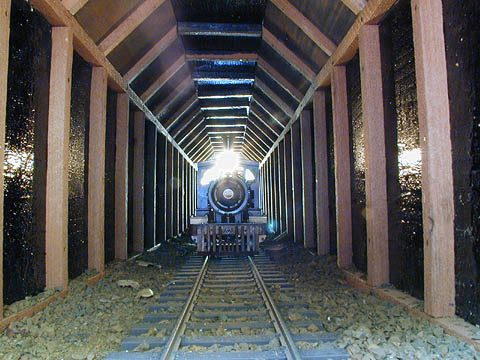 There's no better symbol of the anachronism that is Texas state government than the ineptly named Railroad Commission, or RRC. It has nothing to do with choo-choos, and everything to do with the State's oil and gas legacy.
There's no better symbol of the anachronism that is Texas state government than the ineptly named Railroad Commission, or RRC. It has nothing to do with choo-choos, and everything to do with the State's oil and gas legacy.
Or is it misnamed? Its innocuous title keeps it off a lot of citizens' radar screens while going about its business of shoving anyone or anything not in the oil and gas business around to make it more comfortable. Our drilling contaminating your water? You can to get the bottled stuff delivered. Our waste disposal causing earthquakes? You'll get used to it. Our air pollution causing your child's nosebleed? What's a couple of ER visits compared to our nation's energy security? Railroad? Yes – it's right there in our name.
Instead of being appointed by the Governor, the three RRC commissioners are elected statewide…with the help of contributions from the oil and gas industry. This isn't the fox guarding the hen house. There are no hens left.
This is why any review of the Commission, even one by the equally inept State Legislature, is a chance to get the word out about how god-awful the RRC is and what needs to be done to overhaul it. Beginning this month, that's what's happening, because 2017 is the year the Railroad Commission is getting "sunsetted" by the state.
Sunset laws demand that every state agency must come before the legislature and justify itself anew about every 12 years. Usually pro forma exercises, occasionally a terrible agency is allowed to die. Most have their missions amended or rules tweaked, or their names changed. this is how the "Texas Natural Resources Conservation Commission," or, "TNRCC/"TRAINWRECK," became the "Texas Commission on Environmental Quality/"TCEK." After being postponed last session, it's the Railroad Commission's turn now.
Tomorrow night's faux-official Town Hall meeting on the Railroad Commission being sponsored by Earthworks, Public Citizen and the Sierra Club is a kind of milk run for the more important job of testifying in front of state legislators in Austin later in the month, on the 22nd. Attend to find out how you can use this process to gain more publicity for its terrible record, and perhaps be able to actaully tweak the system to be more citizen-friendly.
Texas Railroad Commission Town Hall
Tuesday, August 2
Grapevine Convention Center
1209 Main St.
(located off 114 and Main St. exit)
Registration: 6:30 pm
Program: 7:00 pm
Texas Railroad Commission Public Testimony at the Capitol
Monday, August 22
For more information on the whole process, talk to Rita Beving with Public Citizen and the Sierra Club, 214.557.2271
Monthly TEDX Teleconference Tutorial on the Hazards of Fracking
 Founded by the late great Theo Colburn, who along with her co-authors of "Our Stolen Future" way back in 1996 just about invented the field of "endocrine-disrupting chemicals," the Endocrine Disruption Exchange (TEDX) is holding a monthly teleconference series begining in April focusing on chemicals associated with fracking.
Founded by the late great Theo Colburn, who along with her co-authors of "Our Stolen Future" way back in 1996 just about invented the field of "endocrine-disrupting chemicals," the Endocrine Disruption Exchange (TEDX) is holding a monthly teleconference series begining in April focusing on chemicals associated with fracking.
First up on Thursday, April 7th at 1 pm is Dr. Chris Kassotis, who's been looking at the connection between fracking chemicals and surface and ground water contamination near fracking sites. According to the TEDX release, Kassotis will speak about…
"…his recently published research demonstrating increased endocrine disrupting activity in surface and ground water near fracking wastewater spill sites, as well as nuclear receptor antagonism for 23 commonly used fracking chemicals. His studies have shown prenatal exposure to a mixture of those chemicals at likely environmentally relevant concentrations resulted in adverse health effects in both male and female C57 mice, including decreased sperm counts, modulated hormone levels, increased body weights, and more. Dr. Kassotis will also discuss his recent work showing increased receptor antagonism downstream from a wastewater injection disposal site.
Dr. Kassotis is a Postdoctoral Research Associate in the Nicholas School of the Environment at Duke University. He completed his PhD at the University of Missouri working with Susan Nagel to assess unconventional oil and gas operations as a novel source of endocrine disrupting chemicals in water, and the potential for adverse human and animal health outcomes from exposure.
This April get together is one of three briefings being given from now until June. According to a preview of the next two calls:
Thursday May 5, 2016, 1:00 pm Central – Dr. Shaina Stacy will discuss "Perinatal outcomes and unconventional natural gas development in Southwest Pennsylvania"
Thursday June 2, 2016, 1:00 pm Central – Dr. Nicole Deziel will discuss "A systematic evaluation of chemicals in hydraulic-fracturing fluids and wastewater for reproductive and developmental toxicity"
You have to go online and register as a participant if you want to listen in or ask quesitons via a live chat line.
We Don’t Know The Cause of the Irving Shaking, But We Do Know Fracking Alone Can Cause Quakes
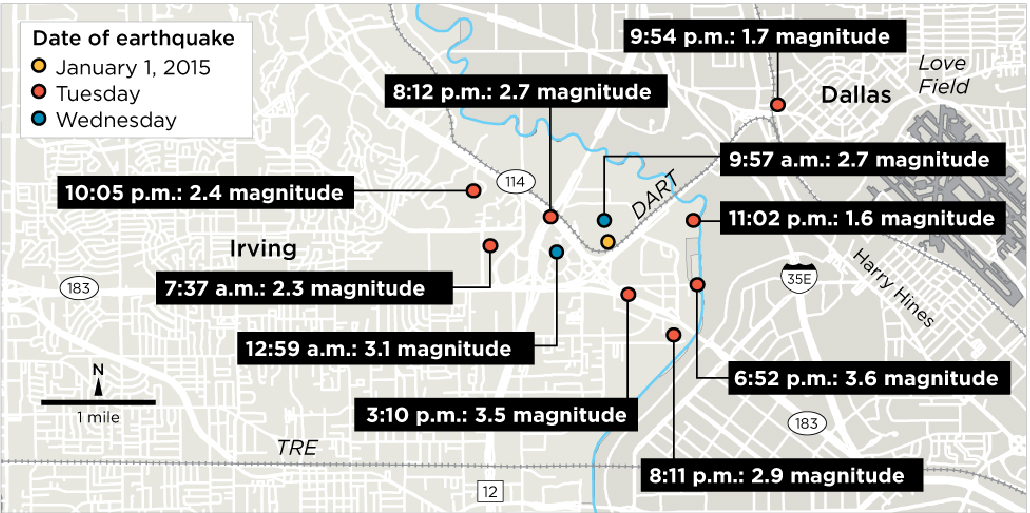 No one really has any idea what's causing the "swarm" of earthquakes along the Irving Dallas border. What is known is that this is a new phenomenon. None of us who grew up here in the DFW area can ever remember having this kind of problem with the ground shaking – and certainly not with almost a dozen noticeable quakes in 24 hours.
No one really has any idea what's causing the "swarm" of earthquakes along the Irving Dallas border. What is known is that this is a new phenomenon. None of us who grew up here in the DFW area can ever remember having this kind of problem with the ground shaking – and certainly not with almost a dozen noticeable quakes in 24 hours.
Circumstantial evidence points to "human-induced seismicity" as the oil and gas industry folks call it, although one can't be certain. Ground zero for these earthquakes is along the Balcones Fault, about the oldest geographical feature in Texas – clocking in at one billion or so years old. It's the same fault that runs down Highway 67 and then I-35 by way of the limestone escarpment in Cedar Hill and Midlothian, the one the cement plants there mine for raw material. It snakes up to the Texas – Oklahoma border in less dramatic fashion, including along the Trinity River bottomland where the Irving/Dallas quakes are being recorded.
What's also known is that when you apply new pressures, or re-arrange the pressures, to an existing fault, you get movement. That why deep injection of anything – fracking wastes at a well disposal site or CO2 at existing wells, have been linked to triggering earthquakes – especially where there are already faults.
This is what was probably happening in December 2013 through January and February of 2014 in and around Azle, when that part of the Metromess was experiencing it's own earthquake "swarms." There are at least two injection wells in the vicinity that were at the center of many of the quakes and since their pressures and volumes have been decreased, those swarms have decreased as well.
We know that a couple of fracking waste injection wells at DFW airport on the edge of Irving were closed because of suspected links to earthquakes they were causing.
"And an earlier study by scientists at Southern Methodist University (SMU) and UT found links between disposal wells near the DFW airport and induced earthquakes for a series of quakes in 2008 and 2009. The study specifically looked at two injection wells in the area that were built in 2008. Seven weeks later, earthquakes started. “Were the DFW earthquakes natural or triggered by activities associated with natural gas production, most likely saltwater injection to dispose of brines?” the report asked. The study said yes, the “correlations are consistent with an induced or triggered source.”
Those DFW airport wells have been closed for years, but with millions of gallons of waste being stored deep underground, are they still capable of causing pressures on the Balcones and/or faults that feed the Balcones? We know less about the geology underneath us than we do the deep space above us.
In the middle of the earthquake swarm there are two gas wells on the University of Dallas campus – one that was producing until 2012 and one where the casing failed and shut down early on. They've been there since 2009 but we don't know the recent history of either.
No new drilling or injection activity is known to have occurred at or near the sites of the most recent earthquakes.
We've come a long way from the original perceived foil hat territory of fracking activity causing earthquakes. When many of us first heard about this association, it sounded like science fiction. Now we know it's science fact. Even the oil and gas industry concedes that injection wells have a connection to earthquakes. That's a huge change in the debate since only a few years ago.
What is less known, and what the industry does not concede yet, is that fracking alone has been linked to earthquakes.
A 2012 British study found fracking itself caused small earthquakes near Blackpool.
The report, undertaken by independent experts and commissioned by the UK’s Department of Energy and Climate Change, looked at the relationship between fracking operations by the Cuadrilla company at Preese Hall well, near Blackpool in Lancashire, and small earthquakes between April and May of 2011 – the largest a magnitude 2.3. The report agreed with previous studies that the earthquakes were caused by the process.
It said the stress in the fault was pre-existing and the hydraulic changes made by fracking initiated the earthquake sequence.
The same thing happened in Canada with fracking near the Horn River Basin.
"…a report released recently by the B.C. Oil and Gas Commission sheds light on the huge shale gas deposits in northeastern B.C. Quakes recorded by Natural Resources Canada ranged from 2.2 to 3.8 on the Richter scale, below the 4 mark and thus deemed minor.
"The investigation has concluded that the events observed within remote and isolated areas of the Horn River Basin between 2009 and 2011 were caused by fluid injection during hydraulic fracturing in proximity to pre-existing faults," the commission said in its report."
We don't know what's causing the Irving quakes, but we do know that fracking alone has been known to cause the size of earthquakes being recorded there now. To suggest that only injection wells have been linked to quake activity is just plain wrong.
We're messing with Texas geology in a way that we haven't before, in areas of the state where we haven't before. We really don't know what the long-term consequences of that messing are.
New Encyclopedia of Fracking Harms
 Those that keep up with these things know the rate of new information about fracking has increased almost exponentially for the past couple of years. New studies arrive monthly covering a host of subjects – air pollution, water contamination, earthquakes from injection wells, truck traffic, etc. So many it's hard to keep up and get a view above the fray. Now, at least for the next couple of months, there's a new comprehensive guide for journalists, citizens, and policymakers that tries to put all the latest evidence into one publication.
Those that keep up with these things know the rate of new information about fracking has increased almost exponentially for the past couple of years. New studies arrive monthly covering a host of subjects – air pollution, water contamination, earthquakes from injection wells, truck traffic, etc. So many it's hard to keep up and get a view above the fray. Now, at least for the next couple of months, there's a new comprehensive guide for journalists, citizens, and policymakers that tries to put all the latest evidence into one publication.
Produced by the Concerned Health Professionals of New York, the new document has the slightly unwieldy title of "Compendium of Scientific, Medical, and Media Findings Demonstrating Risks and Harms of Fracking." Clocking in at over 60 pages, it does manage to cover a lot of ground, including air and water pollution, occupational hazards, noise pollution, earthquakes, flooding, radioactive releases, climate change, agricultural threats, crime rates, property values, and the inflated economics of gas reserves. In short, for now, it appears to be the one-stop shop for everything you wish you didn't need to know about fracking, but wanted to ask.
Extensively researched and footnoted, the Compendium is something you can hand your city council member or State Representative in hopes that their superficial scanning at least produces a better appreciation for the myriad of hazards now associated with the practice.
Why Downwinders is involved in the Azle Earthquake Fight
 Downwinders at Risk's Jim Schermbeck was one of several speakers at the public organizing meeting on January 13th in Azle, just northwest of Ft. Worth, that saw the creation of a local citizens group to campaign to end the "human-induced" earthquakes plaguing the area for the past several months.
Downwinders at Risk's Jim Schermbeck was one of several speakers at the public organizing meeting on January 13th in Azle, just northwest of Ft. Worth, that saw the creation of a local citizens group to campaign to end the "human-induced" earthquakes plaguing the area for the past several months.
On Tuesday, he'll climb aboard a bus with Azle area residents and go to Austin to speak before the Texas Railroad Commission about the need to cease operations at local fracking waste injection wells until a Unites States Geological Service study on problem in completed in April.
Why is a group whose stated mission is protecting the DFW airshed getting involved with a fight over injections wells and earthquakes?
1. We were asked to. There just aren't that many groups in Texas that employ someone who knows how to parachute into a community and start an effective campaign from scratch. Downwinders is one of them. When we're asked to help a community we haven't been involved in before, as we were in Frisco, and as we are now in Azle, we think about our own past and the lack of any professional resources on the scene in the early 1990's during our fight with the Midlothian cement kilns. If we can be of some help in assisting people who legitimately need it, we usually don't turn them down.
2. Injections wells can be significant sources of air pollution. These facilities can dispose of 100 to 200 million gallons or more of waste every year. Besides fugitive emissions for unloading and storage, some injection wells also have outdoor pools of waste that systematically evaporate pollutants into the air. Injection wells are known to contribute to air quality problems on the ground similar to those experienced by original Downwinders living near the Midlothian cement kilns when they were burning hazardous waste. It turns out there are downwinders surrounding injection wells too. These well emissions are not only a toxic threat to residents living in the immediate vicinity, but they also contribute to regional smog problems too.
3. A win in Azle could led to saner restrictions on locating injection wells. It looks like the recent "swarm" of earthquakes around Azle are centered between two active injection wells. Why are these wells causing problems but others aren't? And why are injection wells being placed in densely populated areas near lots of water wells and infrastructure? DFW Airport saw earthquakes from their injection well and it got closed. Azle residents just want the same respect as American Airlines jets. Are there places in Texas where injections wells shouldn't be located? Yes. Like airports and places where people live near-by. Is it possible to use the Azle fight to better articulate that, regionally or even statewide? Yes. And that would be a good thing.
4. Azle represents an opportunity to organize and win deep behind enemy lines. Azle is in the heart of the Barnett Shale. It's already surrounded by wells and pipelines and compressors, and yet area residents know the shaking that's disrupting their lives is directly linked to fracking itself. This is a revolt of the already-gassed masses, something the western part of the Metromess hasn't seen. It's also true that Azle is prime tea-party GOP territory. Making alliances there helps give lie to the myth that environmental health is only something Democrats and tree-huggers are concerned about. Azle residents can't be easily dismissed as Greenpeace types. You can already see the worry from elected officials over the rise of these new critics. Railroad Commission special meetings. The hiring of a new state seismologist. A new legislative committee on quakes. All in less than a month. This ain't Austin. It's not even Dallas.
That's why we're getting on the bus come Tuesday.

